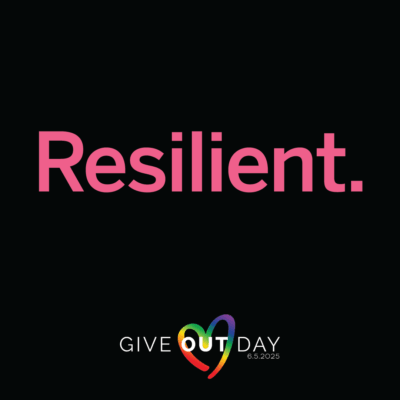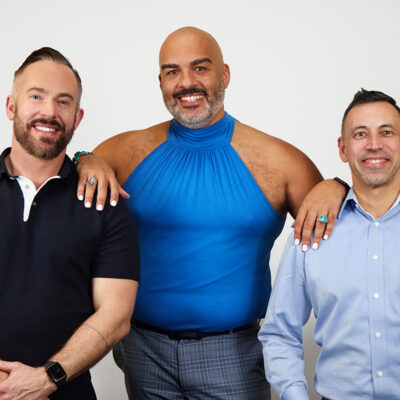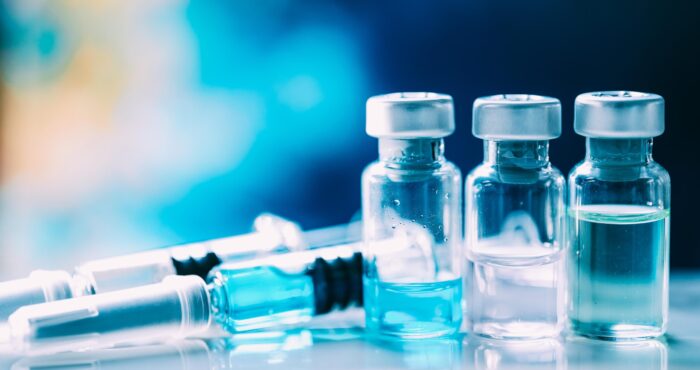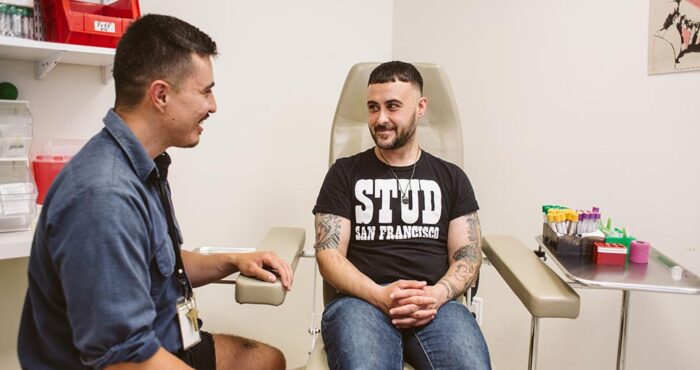CROI 2013: iPrEx Update—A Q&A with Dr. Robert Grant
Editor’s note, July 2019: Since this article was published, many research studies have confirmed the effectiveness of Truvada PrEP for HIV prevention. Find more information about preventing HIV with PrEP and find a PrEP provider if you’re interested in starting PrEP.
The iPrEx trial showed that taking Truvada PrEP protected men who have sex with men from HIV infection: The risk of acquiring HIV was reduced by 99% among those with drug levels in their blood corresponding to daily use, observed iPrEx protocol chair Robert Grant, MD, MPH, in a presentation Monday at the 20th Conference on Retroviruses and Opportunistic Infections.
Risk of HIV was still markedly reduced by 96% when drug levels indicated use of four PrEP pills per week, indicating there is some forgiveness if a few doses are missed. (However, both the Food and Drug Administration, which approved Truvada for PrEP in July 2012, and the Centers for Disease Control and Prevention recommend that PrEP be used daily to assure the highest level of protection and to foster daily pill-taking habits.)
But what happens when access to PrEP is interrupted? Will PrEP prove to have merely delayed HIV acquisition in people at high risk for infection?
An analysis of data from a months-long break in PrEP access between two phases of the iPrEx study addresses these questions. “There was no excess incidence after stopping PrEP,” reported Grant.
In addition, HIV risk throughout iPrEx was not constant; reports of engaging in what Grant referred to as “condomless receptive anal sex” fluctuated over time: “Despite high HIV incidence overall in this cohort, participants moved in and out of ‘seasons of risk.’”
In this Q&A, Dr. Grant shares how these results can inform “real world” use—including guidance on how best to start and stop using PrEP when an individual’s HIV risk changes—and why the availability of PrEP and other prevention strategies are triggering a change in language around “unprotected sex.”
. . .
BETA: What do these findings mean for PrEP use going forward? And how are they informing guidelines for using PrEP most effectively?
Dr. Robert Grant: These are important questions. What we are finding in the context of iPrEx is that people go in and out of periods of risk for acquiring HIV. Data from Bangkok and now South Africa and other places is indicating that, on average, people at high risk have intercourse one time a week. But that’s only part of the intermittency.
We see in our data from iPrEx that at any given moment in time, 30% of the cohort has had no sexual partners in the last three months. And yet throughout, we’re asking them to take a pill a day to prevent HIV; that must have seemed pretty silly to them. And in fact, we can see from drug-level testing that people who’ve had no sexual partners are less likely to be taking PrEP—and that makes sense.
…What this means for the PrEP field is that we need to be able to provide guidance on when to start and when to stop, because in fact for most people there are “seasons of risk.” People go in and out of relationships where they are dating openly or having many partners, and then they have other periods when they’re having no partners, or having one partner and they’re able to negotiate safety within that partnership.
BETA: What are the current guidelines used in your trial?
Dr. Grant: At this point in iPrEx, we’re recommending that people should not feel themselves to be protected by PrEP until they’ve taken seven pills. We ask them to start at least seven days before any anticipated exposure.
Now, it may be that they start to be protected after the first dose and then they reach high-level protection after three doses, but we don’t know that for sure. Just to give people a margin of safety, we think seven pills is enough to get to very high levels of protection.
We’re also recommending that after the last significant potential exposure to HIV, people should continue PrEP for four weeks. Essentially, that’s the equivalent of post-exposure prophylaxis. I think it also gives people four weeks to really make sure they’re in a new pattern in their life, where whatever alternative way they’ve found to be safe is really going to work for them in a durable fashion. So we ask people to continue taking PrEP for 30 days after their last significant exposure.
Of course, people are free to use PrEP however they like; we’re just trying to provide guidance to allow for the most effective use.
This is guidance we’re using internally in iPrEx, but I think that we do need for the CDC and other agencies to be clearer about when to start and when to stop, because people do go in and out of periods of potential risk.
BETA: Has the iPrEx study team shared those internal guidelines with CDC, to help inform future recommendations?
Dr. Grant: Yes, we are in ongoing communication with people at the CDC and they are formulating new guidance that should provide more details. We hope it will provide more details about when to start and when to stop.
BETA: I noticed that the slides you presented on Monday used the term “condomless receptive anal intercourse,” not the usual “unprotected receptive anal intercourse.” What’s behind this change in language?
Dr. Grant: Well, we’ve come to realize that the word “unprotected” or “protected” is ambiguous now, because there are many ways that people are protecting themselves, not just with condoms.
People can protect themselves by negotiating safety or by testing themselves and their partners and negotiating sexual practices based on the test results—that’s called “seroadaptive behavior,” or “serosorting” if they actually choose their partner based on HIV test results. And then there’s non-penetrative sex, or there’s oral sex.
There are lots of ways that people can protect themselves, and I think we shouldn’t use the word “unprotected” to mean “condomless.” I think if we want to talk about condomless sex, then we should use a very specific term for that.
. . .
What’s next for iPrEx? The open-label iPrEx OLE study is underway, with more than 1,500 participants who took part in the original iPrEx trial now either continuing to use Truvada PrEP or, if they had originally been taking placebo, receiving PrEP for the first time.
In addition, analyses of iPrEx data are ongoing, with more news anticipated within the next year. “We have a group preparing a paper that will describe the patterns of risk in iPrEx: the seasons of risk, the intermittency of potential exposure, and how that correlated with drug use. That is an analysis in progress,” Dr. Grant told BETA.
“It really has come up recently as more and more people have contacted us and said, ‘You know, I’m a person who never uses condoms; that’s a personal choice I’ve made. Can you tell me how many people like me were in your study?’” Dr. Grant added, “We need a different kind of analysis that is much richer, much more descriptive about who PrEP users were in iPrEx and what their experience was.”
Sources:
Anderson, P. and others. Intracellular Tenofovir-DP Concentrations Associated with PrEP Efficacy in MSM from iPrEx. 19th Conference on Retroviruses and Opportunistic Infections. Seattle. March 8–8, 2012. Abstract #31LB.
Grant, R. and others. No excess in HIV incidence after stopping oral emtricitabine/tenofovir pre-exposure prophylaxis: the iPrEx trial. 20th Conference on Retroviruses and Opportunistic Infections. Atlanta. March 3–6, 2013. Abstract #27.









